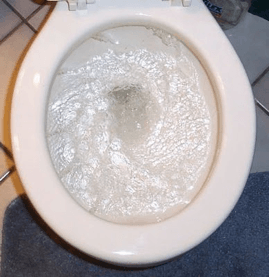We’ve all been there. You turn on the faucet but nothing comes out, or you take a shower and it turns into an uncomfortable ankle-deep pool. A blocked drain is one of the most frustrating problems that can occur in your home, causing inconvenience and disruption. But don’t panic, click here to discover our essential guide for dealing with buildings blocked drains.
Know What is Causing the Blockage
The first step in resolving a blocked drain is identifying the cause. Tree roots are the main perpetrator, infiltrating pipes and creating obstructions over time. Other culprits include items inadvertently flushed down the toilet, such as tissues, wet wipes, and sanitary products, which can congeal and block drains. Grease, hair, and dirt build-up from oil, soap and shampoo residue can also form clogs.
Tackling the Blockage Yourself
If you believe the blockage is caused by something small like wet wipes or tissue paper, then it might be possible to tackle it yourself. First, try using a plunger to see if you can get the obstruction moving. Then, if that doesn’t work, pour a bucket of hot water into the drain. If neither of these methods works, the obstruction may be too big to shift with DIY tactics alone, meaning it’s best to call in a professional.
Another way of removing the blockage yourself is to use an auger, often referred to as a drain snake. Run this tool through the pipe to dislodge the obstruction, being careful to follow instructions as some augers can damage pipes if used incorrectly. It’s also worth noting that these tools are designed for indoor plumbing only, so don’t attempt to use them outdoors.
Chemical Cleaners
Often found in supermarkets and hardware stores, chemical cleaners may provide a solution for tackling blocked drains. However, be warned that these solutions can be extremely corrosive, potentially damaging the pipes and other fittings, as well as posing health risks when inhaled. Some chemical cleaners also struggle to break through stubborn blockages and can be toxic to aquatic life if poured down the sink. It’s therefore not recommended to use them, especially in environmentally sensitive homes or buildings.
Calling In Help
When dealing with more serious cases of blocked drains, it’s best to call in a professional plumber. Plumbers come equipped with the right tools and knowledge to quickly identify the source of the blockage, prevent any further damage, and carry out necessary repairs.
Preventing Future Blockages
Once you have resolved the current issue, it’s time to focus on preventing them in the future. To avoid drainage issues, make sure you avoid flushing anything down the toilet that shouldn’t be there, such as nappies, baby wipes, sanitary products, and condoms. Additionally, ensure everyone in the house is mindful of what they put down the sink. Grease, oil, and food waste should never go down drains. Finally, offering up regular maintenance can protect against blockages, such as checking for tree root ingress around outdoor pipes at least once a year.

Conclusion
Blocked drains can create a lot of hassle, but with the help from this essential guide you can identify the source of the problem and take steps to fix it, whether it’s through DIY tactics, chemical cleaners or a professional. And don’t forget to take preventative measures to reduce the risk of future blockages. Click here to find more plumbing tips to help keep your home running smoothly!
